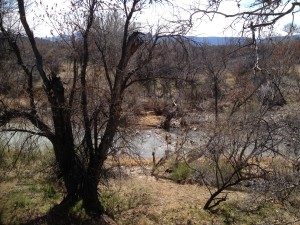Arizona
Grand Canyon, Arizona
The Grand Canyon is a geological process that has played out over unimaginable time spans.
It is 277 river miles long, up to 18 miles wide and 1 mile deep. It has sustained people materially and spiritually over thousands of years.
 The Paleo-Indians inhabited the area up to 12 000 years ago using spears to hunt larger mammals. In the Archaic Period (up to 9 000 years ago) hunter-gatherers were dominant. Basketmakers, 2 500 years ago, introduced bows and arrows, pit houses, pottery and agriculture. Up to 1300 AD, Ancestral Puebloans grew corn, beans and squash. In 1500 AD ancestors of the Hualapai, Havasupai, Southern Patiute and Navajo moved into the area.
The Paleo-Indians inhabited the area up to 12 000 years ago using spears to hunt larger mammals. In the Archaic Period (up to 9 000 years ago) hunter-gatherers were dominant. Basketmakers, 2 500 years ago, introduced bows and arrows, pit houses, pottery and agriculture. Up to 1300 AD, Ancestral Puebloans grew corn, beans and squash. In 1500 AD ancestors of the Hualapai, Havasupai, Southern Patiute and Navajo moved into the area.
 As early as 1540 Hopi Indians guide Spanish explorers to the South Rim. In the 1900s the railroads brought tourists and in 1908 it was declared a National Monument by President Theodore Roosevelt. The Grand Canyon became a National park in 1919.
As early as 1540 Hopi Indians guide Spanish explorers to the South Rim. In the 1900s the railroads brought tourists and in 1908 it was declared a National Monument by President Theodore Roosevelt. The Grand Canyon became a National park in 1919.
Montezuma Castle, Arizona
Not a castle in the traditional sense and not built by Montezuma !
Montezuma Castle is an amazingly well preserved series of cliff dwellings, about 20 rooms on 5 levels about 90 feet above ground. These “apartments” were built into limestone cliffs along the banks of Beaver Creek by the ancient Sinagua culture and lived in between 1100 and 1425 AD.

Beaver Creek – the seasonal flooding of which probably required the building of Montezuma Castle 90 feet up the cliff face.
European explorers who stumbled on the ruins in 1860 named them after the Aztec Emperor Montezuma, under the mistaken belief he must have been involved in the construction.
Hopi and Yavapai Native Americans trace their ancestry to immigrants from the Montezuma area.





